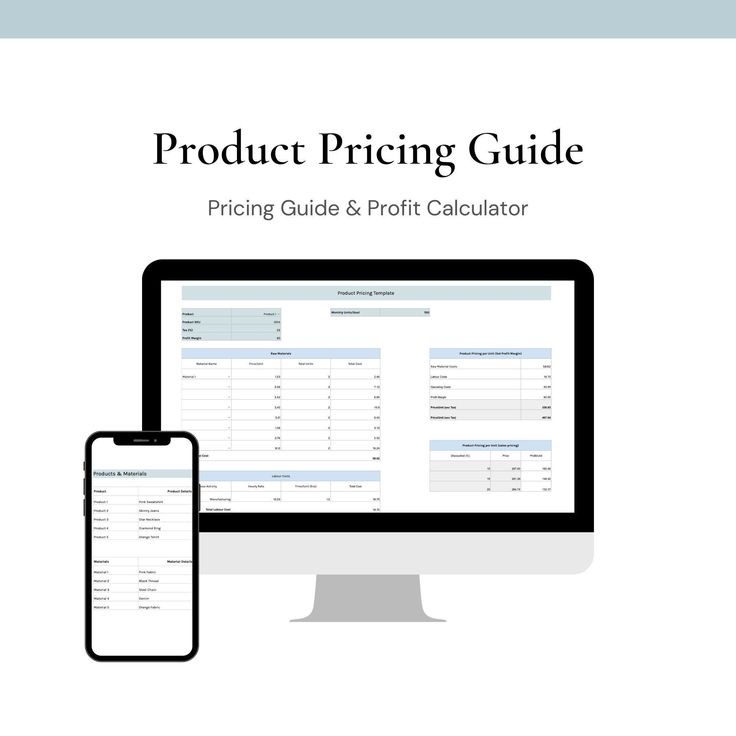How to Calculate Profit Margins in Retail: A Case Study on T-Shirts vs. Designer Clothing

When running a retail business, one of the most important things to master is profit margins in retail. Whether you’re selling low-ticket items like T-shirts or high-ticket designer clothing, understanding how to calculate your margins and optimize your product pricing is crucial for ensuring your business remains profitable. In this article, I’ll walk you through how to calculate margins for retail and examine a case study that compares a low-ticket item (T-shirt) and a high-ticket item (designer clothing) to provide real-world insights on profitability.
Why Understanding Profit Margins in Retail is Essential
Before we jump into the case study, let’s break down the basics of profit margins. Simply put, a profit margin represents the difference between the cost of goods (COGS) and the selling price, usually expressed as a percentage of the selling price. In retail, calculating both gross profit margins and net profit margins can help you understand how well your business is performing financially.
Gross Profit Margin vs. Net Profit Margin
- Gross Profit Margin measures the difference between your retail price and the COGS (the cost you paid to acquire or produce the product). This doesn’t account for other expenses like rent, marketing, and utilities.
- Net Profit Margin, on the other hand, takes into account all additional business expenses, giving you a clearer picture of your actual profitability.
Now that you know the basics, let’s apply these concepts in a real-world scenario.
Case Study: Comparing a T-Shirt and Designer Clothing
Let’s explore how profit margins in retail differ between a low-ticket item (T-shirt) and a high-ticket item (designer clothing), and how product pricing influences your overall profit.
Scenario 1: Low-Ticket Item – T-Shirt
- Product: Basic T-Shirt
- Cost of Goods Sold (COGS): $5 (wholesale) + $2 (shipping and packaging) = $7
- Retail Price: $25
Profit Margin Calculation:
- Gross Profit: $25 – $7 = $18
- Gross Profit Margin: ($18 / $25) x 100 = 72%
- Additional Costs: $2 (marketing, rent, etc.)
- Net Profit: $18 – $2 = $16
- Net Profit Margin: ($16 / $25) x 100 = 64%
The low-ticket item (T-shirt) offers a high gross profit margin of 72% and a net profit margin of 64%. However, the absolute profit per unit is only $16, meaning you’ll need to sell a high volume of T-shirts to generate significant income.
Scenario 2: High-Ticket Item – Designer Clothing
- Product: Designer Jacket
- Cost of Goods Sold (COGS): $400 (wholesale) + $20 (shipping and packaging) = $420
- Retail Price: $1,000
Profit Margin Calculation:
- Gross Profit: $1,000 – $420 = $580
- Gross Profit Margin: ($580 / $1,000) x 100 = 58%
- Additional Costs: $15 (marketing, rent, etc.)
- Net Profit: $580 – $15 = $565
- Net Profit Margin: ($565 / $1,000) x 100 = 56.5%
Although the gross and net profit margins for the high-ticket designer jacket are lower than those of the T-shirt, the absolute profit per unit is much higher at $565. This means you could generate substantial profits with fewer sales, provided you can attract the right customers.
Factors That Influence Profit Margins in Retail
Product Pricing Strategy
Your product pricing strategy significantly impacts your profit margins. For low-ticket items like T-shirts, you can set lower prices but must sell higher volumes to make a profit. For high-ticket items like designer clothing, higher prices allow you to earn more per sale, but you’ll need to ensure your brand justifies the price point.For more tips on setting competitive prices in retail, check out our detailed guide on pricing strategies for retail businesses.
Market Demand and Competition
Products with higher market demand often allow for higher margins, especially if there’s less competition. However, heavily saturated markets can drive prices down, which will impact your margins.Operational Costs
Don’t forget that operating expenses (e.g., rent, utilities, labor) must be factored into your pricing to get an accurate net profit margin. Lower operational costs increase your overall profit margin, whereas higher costs will reduce your bottom line.Supplier Relationships
Negotiating better deals with your suppliers can directly lower your COGS, which will boost your profit margins. Building long-term relationships can lead to bulk discounts, favorable terms, or exclusive deals.
For more on negotiating with suppliers, take a look at our complete guide to working with wholesale suppliers.
Key Takeaways for Maximizing Profit Margins in Retail
Low-Ticket Items:
Selling low-ticket items like T-shirts provides higher percentage profit margins but requires higher sales volumes to see substantial overall profits. It’s crucial to focus on efficient inventory management, fast turnover, and broad customer appeal.High-Ticket Items:
High-ticket items like designer clothing offer much larger profits per sale, though the percentage margin may be lower. This type of product often targets a niche market and depends heavily on brand perception and luxury positioning.Balancing Product Mix:
A successful retail business often balances a mix of low-ticket and high-ticket items. This strategy allows for consistent revenue generation through lower-cost items while reaping the significant profits that come from the occasional high-ticket sale.
Conclusion: Mastering Product Pricing and Margins in Retail
Whether you’re selling T-shirts or high-end designer clothing, knowing how to calculate and optimize your profit margins in retail is essential to your success. The goal is not only to cover your costs but to strategically set your prices to maximize profits while staying competitive in the marketplace.
By understanding the difference between low-ticket and high-ticket items and how they affect your margins, you can create a balanced product mix that maximizes your profits across the board.
For more in-depth strategies on building a profitable retail business, don’t forget to explore our articles on boosting retail profitability and managing retail inventory effectively.
Additionally, you can read this helpful guide from Entrepreneur on how retailers can improve their profit margins and streamline their operations.


